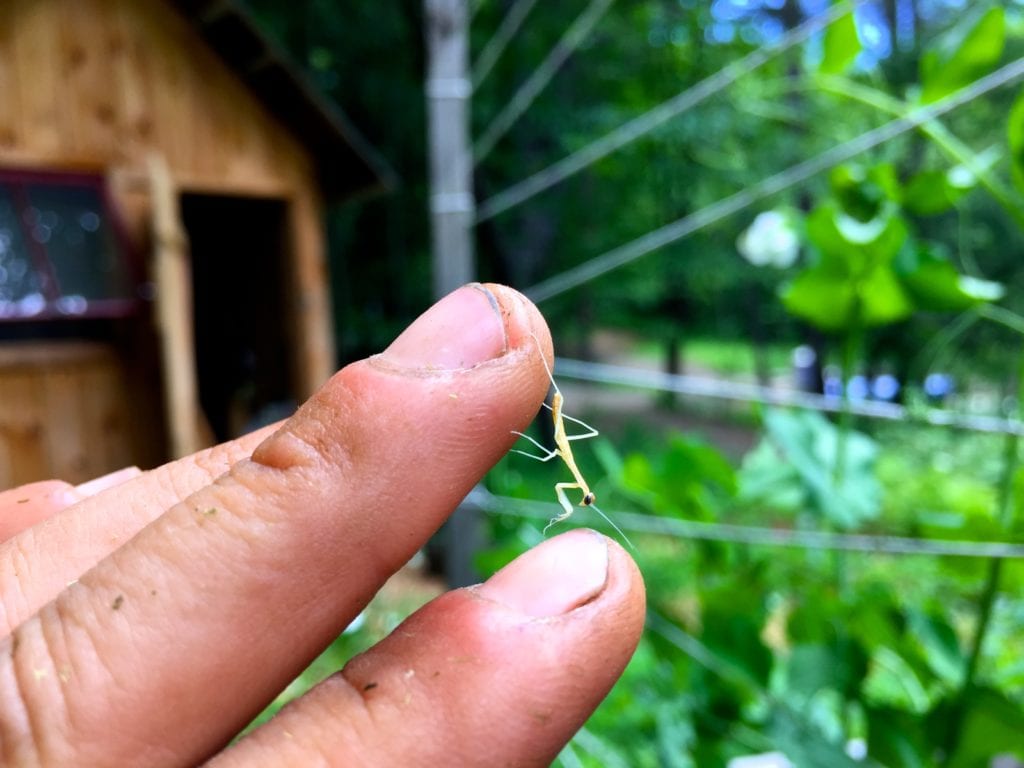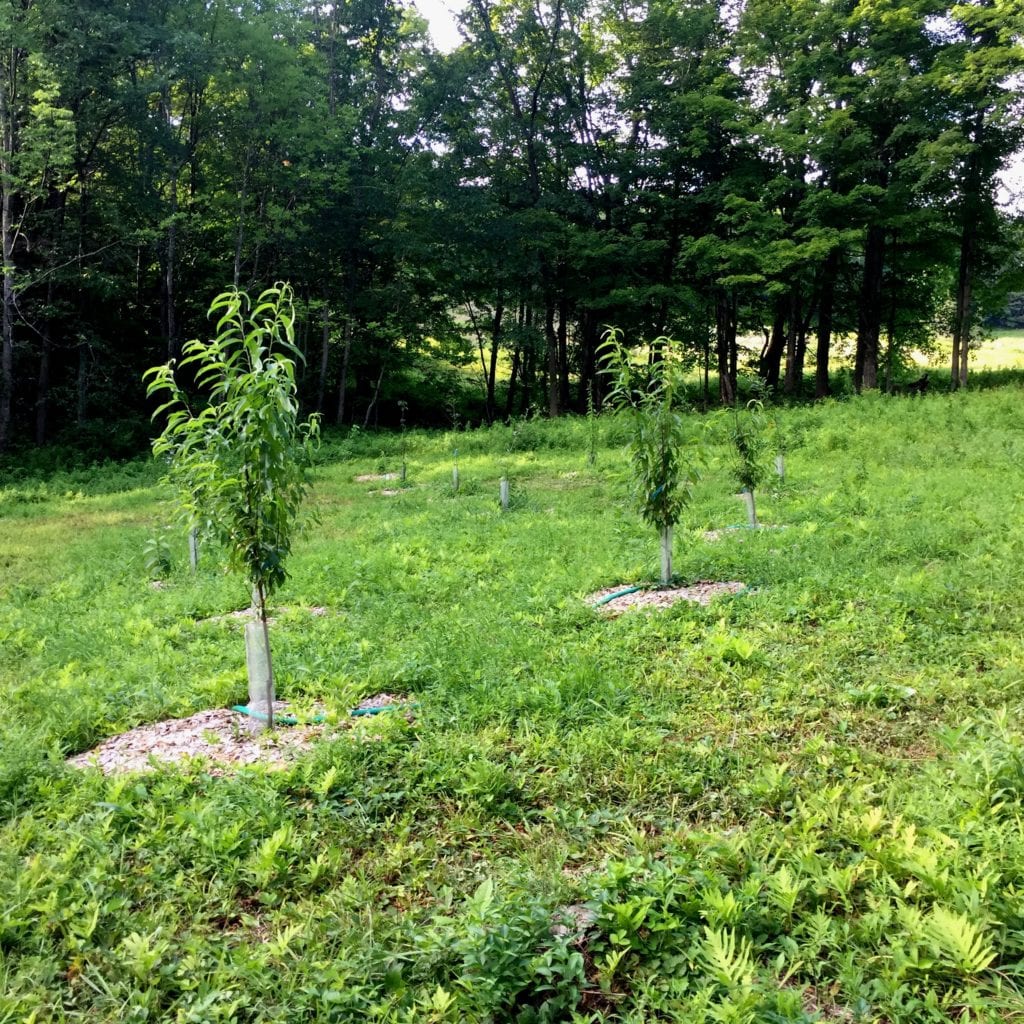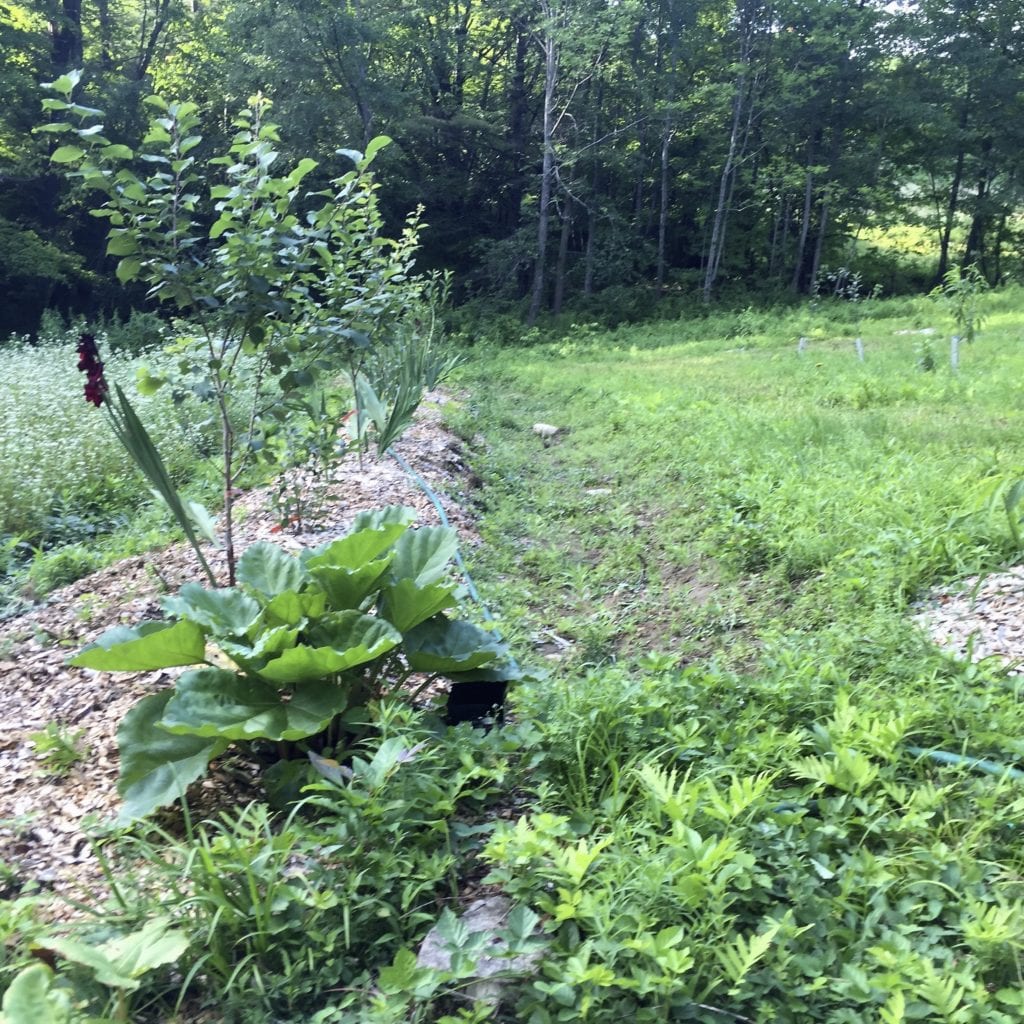by Emily Davis
I recently presented to permaculture practitioners about complex ecological characteristics, their implications for design work, and why they’re important to study. What was interesting to me was the response from these eager ecological designers-to-be; questions were not about ecological principles and dynamism, but rather site particulars and specific strategies. What zone can that peach variety tolerate? How did you install that swale? How do you deal with multi-flora rose?
This attention to details seems to be representative of the design community in general. And though it’s critical to know your site specifics and installation details, there’s a much larger component to being a good landscape designer, and that is understanding ecology.
I began studying ecology in earnest after I realized how much easier my work would be if I could quickly identify the structural and functional niches in a landscape, and then replicate them for a client. Or understand the complex and cooperative relationship between tree roots and the fungi, and promote them within my home orchard and food forest. Or internalize the trends of succession and eventual disturbance, and use that knowledge to help my community improve disaster resiliency.

Native insect predators, like this Praying mantis, were released this spring as a way to ensure balanced trophic levels in the garden, and therefore controlling pest populations ecologically.
And as I learned, the ecological analogs began to surface naturally. Previous projects took on new meaning. The landscapes around me that were so familiar adopted a new character. It’s a deep field, and like studying economics, politics, sociology, etc., we come to realize that the complex systems we are studying have inherent chaos that is beyond our understanding and predictions. But, the more I learn, the more I trust in the inherent intelligence of the ecosystem.
So, what does that inherent intelligence look like? I’ve created my own list of ecological characteristics that inform a design principle. I don’t pretend it’s comprehensive, but it’s a good start.
Ecosystems are complex adaptive systems.
Allow landscapes to self-design.
Ecosystems are complicated things that adopt their own life and evolution depending on the composition of the individual species present and the infinite number of outcomes that can result from their interactions.
We cannot fully understand how a landscape system will behave over time. If the drivers behind ecological evolution are chaotic in nature, no amount of site analysis can prepare us to comprehend the depth and breadth of the system. It’s an impractical burden to think that high-functioning landscape designs come from our own brains fully formed, and so while we relinquish control we also gain ecological processes as a powerful partner.
Our role as ecological landscape designers is to create a mimic of the ecosystem that is already in place, and the most efficient way to do that is to let the landscape evolve into what it needs to be.
Internal ecosystem interactions are organized by trophic levels.
Incorporate consumers, producers, and decomposers, and promote mutualism and cooperation.
Delineating trophic levels is one way to understand how energy is transferred in a system. Producers photosynthesize, consumers absorb that energy, and decomposers redistribute it back to the soil. Predation, parasitism, and herbivory play a major role in regulating species populations, managing competition, cycling nutrients, and controlling the overall dispersal of energy in the system. These are negative feedback cycles that create a sort of checks and balances system over species composition. However, there is also mutualism and cooperation in ecosystems, and they can play a huge role in the food web as well.

This home orchard planting is completed by providing habitat for beneficial soil microbes and fungus via a hefty hardwood chip mulch and bacterial inoculation.
As I planted my home orchard, I took great care not only to prepare the soil for the tree, but also for the fungus. I mulched the trees with layers of rich organic material and hardwood chips and cuttings. I then inoculated the soil at planting time with microbial-rich compost tea. This all creates an environment where the producers and decomposers help each other to thrive, therefore strengthening the entire orchard system.
Obviously micro-managing these interactions and relationships can be prohibitively difficult and tedious. The better option is to design and create landscapes that mimic the native ecosystem and its structure, and subsequently the trophic niches that are created will, hopefully, be filled in time.
Ecosystem functioning is determined by its form.
Integrate physical and biological elements in landscape design.
The physical structure of our designed landscapes can affect ecosystem functioning. The interactions between individual species and/or landscape elements are affected by the physical boundaries or characteristics of a system, and those interactions are what define the ecosystem services (such as water infiltration, remediation, etc.).
Think about two different constructed ponds. One is built in a lawn, exposed to the sun, built with a liner and is artificially filled from a well. There is little ecosystem functioning or value, and maintenance is formidable. The other pond is built in a natural sink, where seasonal high water has been observed. It has partial canopy cover, and so steadily pumping water isn’t necessary since evaporation is reduced. There’s a partial liner, which helps the pond retain some water, but the level fluctuates with the water table and can contribute to groundwater infiltration.

The form of this orchard helps the system function; swales control water flow in the field by slowing and inflitrating stormwater, and in turn the berm-planted trees and shrubs are irrigated.
But this connection between physical traits and biological activity can be extrapolated to different scales. The location of edges and overall form of patches within a landscape can have large implications for how two systems interact. For example, highly lobed patches of forest that are surrounded by a damaged or cleared landscape would be highly prone to the movement of plant species (often exotic invasives). On the other hand, concise and dense patches of forest with little edge would be less prone to a change in species composition.
Ecosystems evolve from disturbance to climax community.
Plan for a series of communities along the disturbance-recovery continuum, and use species from a range of structural, functional, or relational niches.
Although the idea of a climax community is controversial among ecologists, it is well accepted that ecosystems succeed until they reach a steady-state, even if that state includes a regular disturbance regime (such as a floods or fire). We see this very clearly in our New England landscape, where the relics of historic disturbances create a successional landscape mosaic with more recent disturbances.
In the intermediate disturbance theory, regular intermediate disturbances prevent competitive exclusion in plant populations by recreating habitat patches. In turn, local biodiversity is increased, which makes the system more resilient to disturbances in the future. So, including a suite of species that represent all stages of succession will help the system be resilient to change. Furthermore, increasing biodiversity by including plants of different ecological niches will also contribute to system stability. This can be a powerful tool in designing landscapes that are resilient to the unprecedented and unpredictable changes that will (and have) come as a result of climate change.
In closing, understanding ecology clears out the lens with which we can see the natural world, and then improves how we operate as better ecological landscape designers. Our resulting landscapes will function more ecologically, since they work within the natural flows of energy and processes that already govern our world. And at this point in time in our planetary existence, we don’t have the luxury to do otherwise.
About the Author
Emily Davis works as a landscape designer, using a scientific understanding of the environment and a whole-systems design approach. Combined with a love for the outdoors and an eye for beautiful spaces, she hopes to reconnect people with their landscapes. Holding a MS in Ecological Design and a BS in Environmental GeoChemistry, she has also earned certificates in both Permaculture Design and Sustainable Design/Build. Both professionally and as part of her degree programs, she has experience in site-scale residential designs, master planning, and environmental planning. She now lives in the southern hills of Vermont, where she is building her home amidst the maple trees and mushrooms of the Green Mountains.
Each author appearing herein retains original copyright. Right to reproduce or disseminate all material herein, including to Columbia University Library’s CAUSEWAY Project, is otherwise reserved by ELA. Please contact ELA for permission to reprint.
Mention of products is not intended to constitute endorsement. Opinions expressed in this newsletter article do not necessarily represent those of ELA’s directors, staff, or members.

